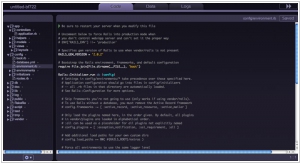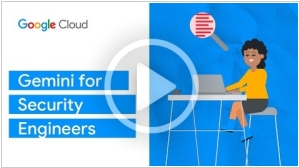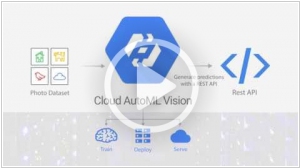Google Cloud Platform vs Heroku
August 19, 2023 | Author: Michael Stromann
16
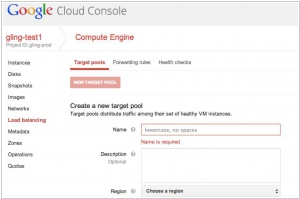
Google Cloud Platform is a set of modular cloud-based services that allow you to create anything from simple websites to complex applications. Cloud Platform provides the building blocks so you can quickly develop everything from simple websites to complex applications. Explore how you can make Cloud Platform work for you.
Google Cloud Platform (GCP) and Heroku are two cloud computing platforms that cater to different use cases and audiences. GCP is a comprehensive cloud platform that offers a wide range of services for infrastructure, data storage and processing, machine learning, and more. It provides a highly scalable and flexible infrastructure for building and deploying applications. GCP is suitable for organizations with complex needs and those seeking granular control over their infrastructure and services. On the other hand, Heroku is a cloud application platform that focuses on simplicity and ease of use. It streamlines the process of deploying, scaling, and managing applications, particularly web and mobile applications. Heroku abstracts away much of the underlying infrastructure management, making it an excellent choice for developers who prioritize simplicity and speed of deployment.
See also: Top 10 Public Cloud Platforms
See also: Top 10 Public Cloud Platforms
Google Cloud Platform vs Heroku in our news:
2024. Google injects generative AI into its cloud security tools
Google has rolled out a suite of new cloud-based security offerings alongside updates to its existing lineup, targeting enterprises handling extensive, multi-tenant networks. Among these introductions is Gemini in Threat Intelligence, a fresh addition to Google's Mandiant cybersecurity platform, harnessing Gemini's capabilities. Currently available for public preview, Gemini in Threat Intelligence empowers users to analyze significant volumes of potentially malicious code, conduct natural language searches for ongoing threats or signs of compromise, and distill insights from open source intelligence reports across the internet. And in Security Command Center, Google’s enterprise cybersecurity and risk management suite, a new Gemini-driven feature lets security teams search for threats using natural language while providing summaries of misconfigurations, vulnerabilities and possible attack paths.
2022. Google Cloud will shutter its IoT Core service next year
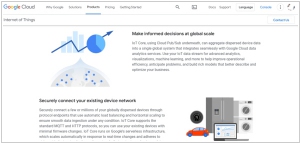
This week, Google Cloud made the announcement that it will be discontinuing its IoT Core service, allowing customers a one-year timeframe to transition to a partner for the management of their IoT devices. Google believes that relying on partners to handle the process on behalf of customers is a more effective approach. A Google spokesperson explained, "Since the launch of IoT Core, it has become evident that our customers' needs can be better met by our network of partners who specialize in IoT applications and services. We have diligently worked to offer customers migration options and alternative solutions, and we are providing a year-long transition period before discontinuing IoT Core."
2022. Google expands Vertex, its managed AI service, with new features
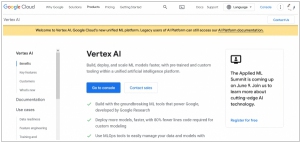
Roughly one year ago, Google introduced Vertex AI, a managed AI platform designed to expedite the deployment of AI models for businesses. Today, Google has announced upcoming enhancements for Vertex, including a dedicated server for AI system training and the introduction of "example-based" explanations. As Google has consistently emphasized, Vertex offers the advantage of integrating Google Cloud services for AI within a unified user interface (UI) and application programming interface (API). According to Google, notable customers such as Ford, Seagate, Wayfair, Cashapp, Cruise, and Lowe's utilize Vertex to construct, train, and deploy machine learning models within a single environment, effectively transitioning from experimental stages to production.
2019. Google Cloud gets a new family of cheaper general-purpose compute instances
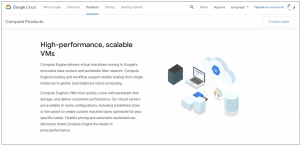
Google Cloud has recently introduced its new E2 family of compute instances, specifically designed for general-purpose workloads. These instances offer a significant cost advantage, delivering savings of approximately 31% when compared to the existing N1 general-purpose instances. Moreover, the new system incorporates enhanced intelligence in terms of VM placement, granting the flexibility to migrate them to alternative hosts as required. To achieve these advancements, Google has developed a custom CPU scheduler. Unlike comparable alternatives offered by other cloud providers, E2 VMs from Google can sustain high CPU loads without artificial throttling or complex pricing structures. It will be intriguing to witness benchmark tests that compare the performance of the E2 family against similar offerings from AWS and Azure.
2018. Google Cloud adds new applications performance monitoring tool
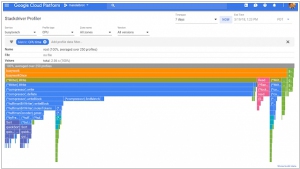
Google has introduced a significant addition for developers working on applications within the Google Cloud Platform. They now have access to a comprehensive suite of application performance management tools known as Stackdriver APM. This suite empowers developers to directly track and address issues within the applications they have built, eliminating the need to rely solely on operations teams. The underlying idea is that developers, being intimately familiar with the code, are best positioned to comprehend the signals emanating from it. Stackdriver APM consists of three primary tools: Profiler, Trace, and Debugger. While Trace and Debugger were already available, the integration of Profiler allows all three tools to seamlessly collaborate in identifying, monitoring, and resolving code-related issues.
2018. Google Compute Engine adds simple machine learning service
Google has introduced AutoML, a groundbreaking service available on Google Compute Engine that empowers developers, even those without prior machine learning (ML) expertise, to construct personalized models for image recognition. The scarcity of machine learning experts and data scientists in today's market is widely acknowledged. To address this challenge, Google's new service enables virtually anyone to submit their images, upload them (and import or create tags within the application), and automatically generate a custom machine learning model using Google's advanced systems. The entire process, from data importation to tagging and model training, is facilitated through a user-friendly drag and drop interface. It's important to note that this service goes beyond the capabilities of Microsoft's Azure ML studio, which offers a Yahoo Pipes-like interface for model building, training, and evaluation.
2017. Google Cloud Platform cuts the price of GPUs by up to 36 percent
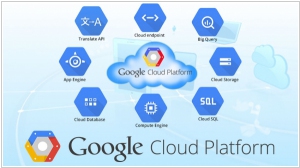
Google is implementing a price reduction for Nvidia's Tesla GPUs on its Compute Engine service, with savings of up to 36 percent. In U.S. regions, the cost of utilizing the slightly older K80 GPUs has been reduced to $0.45 per hour, while the more advanced and powerful P100 machines will now cost $1.46 per hour, both with per-second billing. By doing so, Google aims to attract developers who seek to execute their own machine learning workloads on its cloud platform. Additionally, various other applications, such as physical simulations and molecular modeling, can greatly benefit from the extensive number of cores provided by these GPUs.
2017. Google Cloud Platform gets a cheaper, lower-performance networking tier
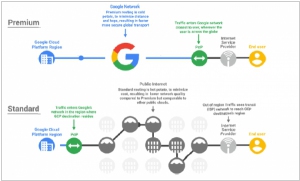
Google is introducing a new networking option for users of its Cloud Platform that offers a more affordable solution. Developers now have the choice between a premium tier, which prioritizes routing traffic over Google's high-speed networks to minimize distance and hops, and a standard tier, which relies on the public internet with potential slowdowns and additional hops. The standard tier is priced 24-33 percent lower than the premium tier in North America and Europe. However, Google applies different pricing models to each tier. The premium tier's pricing is based on the source and destination of the traffic, accounting for the distance it travels over Google's network. In contrast, the standard tier's prices are determined solely by the source location. This new offering provides Cloud Platform users with increased flexibility and cost savings depending on their networking requirements.
2017. Google Cloud Platform improved its free tier
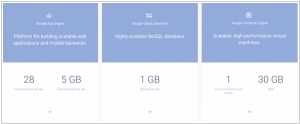
Google has introduced an enhanced always-free tier and trial program for its Cloud Platform. The free tier has been upgraded to provide sufficient resources for running a small application on Google's cloud infrastructure. Users can now utilize a small (f1-micro) instance in Compute Engine, along with free usage of Cloud Pub/Sub, Google Cloud Storage, and Cloud Functions. In total, the free tier encompasses 15 services. Notably, the inclusion of the Compute Engine instance and 5GB of free Cloud Storage usage is a significant update, as these services form the foundation of most cloud applications. Detailed limits and specifications can be found here. This development clearly showcases Google's heightened efforts to compete against AWS by offering a comparable, but more expansive, free tier program to its users.
2017. Google Cloud Platform takes on Windows Azure with new Windows VMs
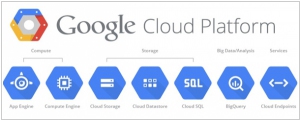
Today, Google unveiled a range of new offerings designed to entice IT professionals who utilize Windows in their data centers to embrace the Google Cloud Platform. The company introduced support for Microsoft SQL Server Enterprise and Windows Server Core on its Cloud Platform. Additionally, Google announced the inclusion of SQL Server Always-On Availability Group support, addressing the concerns of customers seeking high availability and disaster recovery capabilities for critical operations in a cloud environment. In practical terms, this means that IT professionals can now launch pre-configured virtual machines with any of these products on the Google Cloud Platform and pay for them on a per-minute basis. Alternatively, they have the option to bring their existing SQL Server license, which they have already paid for, and leverage it on the platform.

